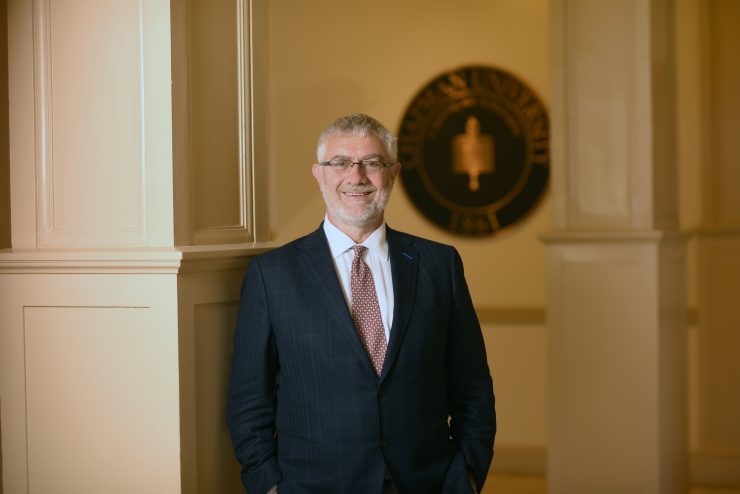While many colleges and universities across the United States begin to toll the death knell, Chapman’s future—and budget—remain bright.
In an address to faculty and staff, Chapman President Danielle Struppa discussed the 2020-2021 budget, key factors in the current higher education landscape and how Chapman will plan for the encroaching decline in university enrollment nationwide, projected to plummet drastically in 2025.
The 2020-21 Budget
Approximately 68% of the 2020-21 budget will go towards elements of the University’s strategic plan, which is in its third year. Of note is that 82% of the Building Real Estate Acquisitions fund will be allotted for planned expansions on Rinker Campus.
President Struppa also outlined how $17.3 million in additional funds will be used to further prioritize the strategic plan.
“The reason that we have additional money to spend is because we are raising tuition and because we are taking more students,” says Struppa. “We have to remember everything that we see in our budget comes essentially from those two numbers.”
Approximately $10 million of the additional funds will go toward academics—$7 million of which will be directed to the Fowler School of Engineering as part of the University’s strategic plan.
Challenging Factors
It’s a tough time for higher education, Struppa added. Confidence in higher education is down 9% from 2015 to 2018, with 48% of individuals surveyed finding a “great deal” of confidence in higher education. Just 11% of business leaders strongly agree that graduating students have the skills and competencies their businesses need.
To further add to this challenging landscape, college tuition and fees have risen 393% since 1990, which has contributed to the 81% increase in student debt over the past seven years.
As a result of these and other factors, U.S. enrollment in institutions of higher education has declined by approximately 3 million over the past 10 years.
Chapman on the Rise
Statistics outlining Chapman’s past and projected future stand in sharp contrast to those of other institutions, the president said.
Chapman’s student loan debt has increased just 1% in the past seven years, with a 1.8% default rate.
“Our debt which is very contained. That’s one of the best numbers nationwide,” Struppa said. The low default rate can be attributed in part to Chapman’s generous financial aid, which reaches 80% of all students, says Struppa.
The Enrollment Crisis
While enrollment is down at for-profit and public institutions, the 4-year private nonprofit sector is the only sector of higher institutions showing growth.
We belong to the only class of colleges for which enrollment is actually successful, and that’s fully private institutions, says Struppa.
Additionally, Chapman’s healthy enrollment and position as a mid-sized university, enables it to generate the resources needed to thrive over the long run.
How Chapman’s Preparing
Struppa outlined three important strategies that will help Chapman prepare for the future:
- Growing the University’s endowment
- Expanding housing on the Orange Campus
- Developing the Rinker campus
“Our ability to provide enhancements is derived from our ability to attract more students,” says Struppa.
Four percent of the University’s endowment can be put back into the budget every year. Growing the endowment will help Chapman continue to enhance the University overall.
“This is an opportunity not just to forecast our future but to consolidate and actually increase our leadership compared with other institutions,” says Struppa. “Most institutions are not thinking about this. They’re waiting for things to happen. I think we can be proactive.”



